What's New
Displaying results 4201 - 4210 of 4914

Resource | Publications,
HIV sentinel sero-surveillance survey (HSS) is the systematic and regular collection of information on the occurrence, distribution and trends in HIV infection and factors associated with infection for use for public health action. In concentrated epidemics, surveillance is conducted among selected groups who may be at highest risk and are most critical to be targeted for interventions.
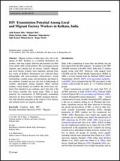
Resource | Publications,
Migrant workers in India play a key role in the spread of HIV. Kolkata is a common destination for workers, who may acquire infection and transmit it to their wives and/or other sexual partners. We investigated sexual relations and condom use by factory workers. Migrant and local factory workers were randomly selected from five wards of Kolkata. Information was collected about demographic and socio-economic characteristics, sexual relationships, condom usage, and perceptions and intent to use condoms. Condom use was very low in both groups of workers, particularly among migrants. Many married workers visited female sex workers but never used condoms. Few intended to use condoms, and if they did, it did not always translate into actual usage.
There is great potential for transmission of HIV/sexually transmitted infections by these workers. Carefully designed intervention and education programs in the context of low literacy and cultural norms are urgently needed.
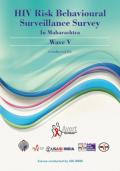
Resource | Publications,
Avert Society has been conducting BSS in seven priority districts of the Maharashtra state since 2004 and completed Wave V in 2009. The key objective of the study is to provide trends of knowledge and behaviour indicators so as to inform the program managers for the expansion of interventions leading to reduction in the transmission of HIV / AIDS and Sexually Transmitted Infections (STI) in the select districts of Maharashtra.

Resource | Publications,
This report supports the proposed UNDP financed technical assistance intended to introduce the National AIDS Spending Assessment methodology to the National Advisory Committee (NACA). Further development, implementation and institutionalization of the NASA methodology is expected to be lead by the NACA in order to standardize the classification of HIV and AIDS expenditures among all stakeholders. It is projected that NACA’s analysis of the tracked expenditures will enable valuable information to be disclosed that will influence the strategic allocation of future resources to Fiji’s HIV/AIDS initiative. Data generated through NASA can also be used to measure the nation’s commitment and effort, which is an important component of the UNGASS Declaration, and therefore will also help Fiji to address some of the gaps that currently exist in its UNGASS reporting.
This final report outlines the amount the Republic of the Fiji Islands spent on the HIV/AIDS initiative over the last two and a half years (2007-2009) from various local and external financing sources.

Resource | Publications,
This report provides an evaluation of an 18-month quality improvement intervention supported by the USAID-funded Quality Assurance Project (QAP) and its successor, the Health Care Improvement (HCI) Project, in Thai Binh Province of Vietnam. The province, located in the Red River’s Delta in northern Vietnam, has 1.8 million population, an annual TB case load of 1600–1800 cases, and an cumulative number of 2188 HIV-infected cases.
A number of activities to expand TB/HIV integration were carried out, including policy development; capacity building; maintaining the continuum of care; quality assurance of services; support for public and private partnerships; strengthening the monitoring and evaluation system; and conducting information, education, and communication activities.
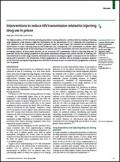
Resource | Reviews and Snapshots,
There is increasing evidence of what prison systems can do to prevent HIV transmission related to injecting drug use. In particular, needle and syringe programmes and opioid substitution therapies have proven effective at reducing HIV risk behaviours in a wide range of prison environments, without resulting in negative consequences for the health of prison staff or prisoners. The introduction of these programmes in countries with an existing or emergent epidemic of HIV infection among injecting drug users is therefore warranted, as part of comprehensive programmes to address HIV in prisons.

Resource | Publications,
Despite a current low HIV prevalence, there are concerns that Sri Lanka could face an impending HIV/ADIS epidemic in the future. As in other countries, the military is considered a vulnerable group in terms of HIV/AIDS. The primary objectives of this study were to assess the level of knowledge of HIV/AIDS in the Sri Lankan military and the extent to which personnel were engaged in risky sexual behaviours.

Resource | Publications,
It has been yet another busy and eventful year for the Ministry as it continues to adapt to the challenges of an environment of continual changes. The Report attempts to highlight the Ministry’s performance in delivering services to the people of Fiji contributing to the targeted outcomes set out by the Government. The efforts, commitment and achievements by our staff are therefore reflected in the Report.
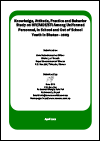
Resource | Publications,
About one-fifth of the HIV infections detected in Bhutan are among young women and men between the ages of 15-24 years. Young people are at special risk for STIs including HIV because they lack information, skills, health services and support that they need to need to make informed choices. Furthermore, uniformed personnel have also been seen as at-risk groups as about 13 percent of HIV cases detected in Bhutan so far have been among the uniformed services.
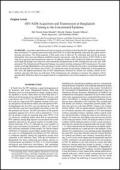
Resource | Publications,
A seventh round behavioral and serological surveillance found that the HIV epidemic had remarkably increased to 7% among intravenous drug users (IDU) in Central Bangladesh, indicating the urgent need to increase prevention.
The main purposed of this study were to find out, by collecting data and the necessary information from sero-surveillances, published reports, and articles, what the prevalence of HIV/AIDS is, and what the acquisition and transmission routes are. In addition, trends in HIV-related risk behaviors among recognized high risk groups were observed, and estimations and projections of HIV transmissions up to the year 2020 results reveal that Bangladesh is a low prevalence country which is turning into one with a concentrated epidemic due to the high HIV prevalance rate of HIV transmission, followed by female sex workers, clients of sex workers, and men who have sex with men. If the transmission rate continues to increase, the situation will be uncontrolled. Therefore, there is an urgent need for a comprehensive prevention program to control the spread of HIV.





